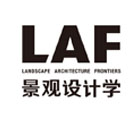俞孔坚:论美丽城市的“三重奏”
2020年8月7日 俞孔坚摄于内蒙古自治区呼和浩特市
中国内蒙古自治区呼和浩特市的城市品质提升行动,市委市政府全体班子及全市两千余名干部正在听取专家建议。将美丽城市设计和绿色生活营造作为关键抓手,强调人民对美好生活的向往是美丽城市建设的出发点,而人与自然的和谐共生是美丽城市的根本。基于这一根本的美丽城市方是可持续的、坚实而有生命力的,其所呈现的形态是一种深邃之美,是将人类的欲望建立在与自然的格局与过程和谐共生之上的美丽。这种深邃之美须在三个维度上构建:美的格局、美的形态和绿色生活,这便是美丽城市的“三重奏”。要实现这样一种美丽,需要一场深刻的思想革命,需要价值观和审美观的根本性改变,这被称为“大脚革命”。
论美丽城市的“三重奏”
俞孔坚
哈佛大学设计学博士;美国艺术与科学院院士;
北京大学建筑与景观设计学院教授;美国景观设计师协会荣誉会员
原文刊发时间:2020年10月
在新冠肺炎疫情(COVID-19)初步稳定后,中国多个部委和全国各大城市政府将城市品质提升行动视为头等大事,逐步推进起来。在刚刚过去的7月和8月,我受邀参与了十多场部级、市级专家咨询会和授课活动,可见,如何建设和管理高品质的美丽城市已经成为实现“美丽中国”愿景及人民对美好生活向往的关键抓手。
如今,城市已成为人类的主要家园,而家园的本质在于人与土地、风、水和生物的生态关系。尽管城市的美丽可以表现在许多方面——诸如社会的公平与和谐、文化的丰厚与多彩、经济的繁荣与活力、生活的富足与幸福、建筑与景观的独特与精美、居民的归属感和认同感——但是,美丽城市的根本是人与自然的和谐共生。没有这份和谐,再亲密的人群也将被迫隔离,正如COVID-19肆虐下的居民;没有这份和谐,再厚重的文明、再多彩的文化、再繁荣的社会也可能顷刻间崩塌;没有这份和谐,再宏伟的建筑、再精美的园林也将黯然无光。回望历史,遥远的1900年前,古罗马文明的精华之城庞贝,一夜之间被火山灰吞没,留下的仅仅是烤焦的残垣断壁和仍似在痛苦挣扎的人体遗骸;不远处的2004年,正在美丽的东南亚滨海城市享受幸福人生的20余万名游客,瞬间被印度洋海啸吞噬[1];最近的2008年,汶川地震转眼便令近7万个鲜活生命消失,美丽的山城化作瓦砾[2];以及今天正在泛滥和明天即将到来的滔天洪水,威胁着繁华的城镇和欢乐的人群……
人与自然和谐共生,是美丽城市的根本。以此为根本的城市才是可持续的、坚实而有活力的,其所呈现的形态是一种“深邃之美”:即将人类欲望建立在与自然格局与过程的和谐共生之上。这样的深邃之美,需要从三个维度进行构建:一是美的格局,即深邃的结构;二是美的形态,即深邃的外形和风貌;三是居民的行为,即绿色生活。这便是美丽城市的“三重奏”。
其一,美丽城市的深邃结构。城市与自然的关系首先体现在空间上,可以从“自然中的城市”和“城市中的自然”两个方面来概括。前者是上帝视角下的国土景观,城市仅仅是国土空间中一些微小的点,甚至不足总面积的1%,因此既有的美丽城市的首要之功在于择一良好城址。这一理念在古代山水信仰中被称为“穴”[3],乃大自然母亲的胎息所在。自然与城市的关系便如同父母之于子女,兼有不可冒犯的威严和难以抗拒的惩罚,及安全庇护等绵绵恩泽——这种恩泽在当代被称为“生态系统服务”[4]。而古代的龙脉、祖山、风水林、水口、护砂等构成的“神山圣水”格局,在当代则被称为“国土生态安全格局”或“生态安全屏障”[5][6]。在这一视角下,美丽城市的深邃结构呈现为城市选址能否与自然和谐共生,城市能否远离洪涝和海潮、山崩和地裂、火山和海啸等自然灾害,这将决定城市能否长存。
“城市中的自然”则是苍鹰的鸟瞰,和谐的城市与自然的空间关系应呈现为镶嵌在城市基底上的连续、健康的自然系统——山-水-林-田-湖-草生命共同体在方圆几十甚至上千平方公里的红尘世界中铺展开来,包括连续的生态廊道、生机勃勃的湿地与湖泊、充满活力的公园绿地等,它们构成了一个能为城市提供自然生态系统服务的生态基础设施。在这一视角下,城市是否具备深邃的结构,取决于这一生态基础设施是否连续完整(包括能否与区域自然山水格局和过程保持连通),以及是否具有足够空间来维持城市的生态韧性—能否为区域洪水提供充足的调蓄空间而不致使灾害;能否有效降解污染、缓解热岛效应、提供多样的生物栖息地,甚至为城市提供部分水、食物、能源和建材;鸟儿在飞行中,能否找到哪怕只是短暂歇脚的“跳板”;鱼儿在游经城市水域时,能否顺畅地到达上游产卵;地震或其他灾害发生时,人类是否有足够的躲避空间和时间;城市能否为居民提供充足的身心再生机会,例如当他们被隔离时,是否仍能方便快捷地进入自然,并获得自然服务……因此,美丽城市的深邃结构就是一个城市基质与自然生态网络相互嵌合的和谐图底关系,是城市适应于自然的空间格局。那些与自然为敌的斩山没谷、断河筑坝、填湖造城等浩大工程所成就的“美丽”,终究是肤浅的、不可持续的。
其二,美丽城市的深邃外形和风貌。在人们的日常活动范围和视野里,城市是由街道、建筑、开放场所(如广场、自然地和公园等)所构成的活动空间。在这一层面上,美丽城市的深邃之形由自然和人文因素相互叠加构成。例如,山坡上的梯田即是底层的地形、土壤和水文过程的显现,而人类明智的开垦和农作则是适应自然过程和巧妙利用自然力的一种表征。这一深邃就在于这是人类适应于自然的结果——犹如白鹭伫立在田间,只因其适宜生存于浅滩湿地。这种城市对于自然的生态适应成就了城市空间的深邃之美,也成就了城市的美丽风貌。生态适应的本质是经济学意义上的节约和人类学意义的节制——用最少的能源、物质和人力来建造城市,便可获得街道、建筑和开放空间的深邃之美:蜿蜒起伏的道路、顺地形而错落的建筑群、就地势而营造的河网和湖泊、适地而栽植的树木花草,都是适应自然衍生出的深邃之美。因此,我们赞美旧时重庆的山城步道、吊脚楼和黄葛树(Ficus virens),欣赏延安的黄土墙、窑洞和枣树(Ziziphus jujuba),怀念北京的胡同、四合院和槐树(Styphnolobium japonicum),迷恋广州的河涌水街、骑楼和木棉(Bombax ceiba)。然而,当八车道路网横贯重庆,当本地树种被外来树种所替代,重庆这座城市也随之失去了深邃之美。只因不理解美的形态,这样的“化妆”几乎在中国所有的城市上演!
其三,美丽城市的绿色生活。城市的美丽还因市民的绿色栖居、绿色出行、绿色消费而深邃。如果说美丽城市的深邃结构中,人类之于自然犹如子女之于父母,敬畏而又依恋;在深邃形态之中,人与自然犹如相爱的夫妻;那么,在绿色生活成就的美丽城市中,人与自然的关系就犹如父母之于子孙——其深邃的含义在于人类作为父母对其后代的责任和关爱,这便是可持续发展理念的本质:既满足当代人的需求,又保障后代人满足需求的可能性。当街道上有更多的人在步行或骑行,而不是被小汽车填满时,城市便多了一份对后代的关爱;当建筑减少了对空调的使用,屋顶和墙面上长满绿色的植被,城市便为后来者留出了更大的生机;当雨水被收集、废水不再排入溪流、垃圾获得循环,城市便增添了一份让后人感激的温暖;当食品能就地生产、包装少去一层华丽外壳、一次性餐具和塑料袋不再泛滥,城市便多了一份爱意。而绿色的生活方式可归结为对物质和能源的节约、循环和再生,表现为对自然资产的珍惜、对生态系统健康的关爱和对其他生命的关照,这终将促进绿色生产方式的发展。
终了,请不要误解,我们绝不是在倡导极端的环保主义或宗教的禁欲主义,更不是反城市主义或出于对过往人类城市文明的怀旧。城市是人类文明的载体,是人类价值观、审美观在大地上的烙印,是人类欲望和自然力之间的平衡。眼前的工业文明和消费主义,向芸芸众生撩拨无度的消费欲望、催生极其浪费的生活和生产方式,并以前所未有的机械和化学力摧毁着自然格局、毒化着自然过程和生命万物;唆使人类凌驾于自然之上,罔顾子孙的未来。于是,城市纵然绵延千里,防护之墙钢铁般坚硬,街道气势恢弘,建筑巍峨壮丽,园林极尽奇巧,也终究浅薄无根,或毁于洪涛剧震、或挣扎于污水浊气。只有在继承过往文明成果的基础上从与自然的矛盾冲突中不断反思,才能使我们走向新的文明——生态文明;这样的人与自然和谐共生的城市美丽,便是深邃之美、生态之美、(尊重自然和基于自然的)“大脚之美”,与可持续发展之美。
On the “Trio” of Beautiful Cities
YU Kongjian
Doctor of Design at Graduate School of Design, Harvard University; Honorary Foreign Fellow of the American Academy of Arts and Sciences; Professor of College of Architecture and Landscape, Peking University; Fellow of American Society of Landscape Architecture
With COVID-19 under control, the urban quality improvement has been considered a prioritizedinitiative across China by many ministries, commissions, and municipal governments. In thepast July and August, I was invited to participate in more than a dozen ministerial and municipalexpert consultations and lectures. The Beautiful China construction requires the wise creation andmanagement of high-quality beautiful cities to realize the people’s desires for a better life.
Today, to human beings, cities have become homes that inherently lie in the ecological relationshipbetween human and land, wind, water, and other creatures. The beauty of a city is regarded bymany aspects—including the justice and harmony of society, the diversity of culture, the prosperityand vitality of economy, the abundance and happiness of life, the uniqueness and exquisiteness ofarchitecture and landscape, and residents’ sense of belonging and identity. Such a beautiful city isbuilt on the harmony and symbiosis between human and the nature—without this harmony, eventhe most intimate people will be isolated, just like the ones under the impact of COVID-19; withoutthis harmony, no matter how rich a civilization is, how brilliant a culture is, or how prosperousa society is, it might all collapse in an instant; without this harmony, no matter how magnificenta building or how elaborate a garden is, it would become pale. Such misfortunes are numerous:far back to 1,900 years ago, Pompeii, an epitome of ancient Rome civilization, was swallowedby volcanic ash overnight, leaving nothing more than scorched ruins and human remains that stillwrithing in agony; not as far as in 2004, more than 200,000 tourists[1], enjoying a happy time inthe beautiful coastal city of Southeast Asia, were instantly engulfed by the Indian Ocean tsunami;in recent 2008, Wenchuan Earthquake took away nearly 70,000 lives and made the beautifulmountainous city destroyed[2]; and the monstrous floods that is threatening thousands of cities andtowns, as well as our lives, all the time….
The harmony of human and the nature supports the city with sustainability, resilience, and vitalityin a “deep form”—satisfying human desires while ensuring natural patterns and processes. Suchbeauty can be constructed in three dimensions: the pattern of beauty (the deep structure); the formof beauty (the deep appearance and style); and the behavior of residents (green lifestyle). This isthe “trio” of beautiful cities.
To the deep structure of a beautiful city, the relationship between city and the nature is reflected inspatial configurations that can be summarized into “the city in nature” and “the nature in the city.”The former refers to the national-scale landscape from God’s-eye view, where cities are distributedlike mosaics in the territory, taking less than 1% of the total area. Therefore, the primary meritof a beautiful city is a good site selection, which echoes with the metaphor of “cave” (a symbolof the womb of Mother Nature) in China’s ancient landscape beliefs[3]. The relationship betweenthe city and the nature can be compared to that between children and their parents: the nature notonly has the absolute dignity and can exert irresistible punishment, but also offers safe sheltersand continuous kindness—which is called “ecosystem services” in modern sciences[4]; the ancientdragon veins (i.e. rolling mountains), ancestral mountains (i.e. the origin of dragon veins), fengshuiforests (i.e. the forests reserved for ideal living conditions), water gates (i.e. inlets or outletsof water bodies), and earth protection (i.e. the hills that protect caves) composed the pattern of“sacred mountains and holy waters,” which is now called “national ecological security pattern” or“ecological security buffers”[5][6]. In this regard, the deep structure of a beautiful city is defined asthe city’s location safety, i.e. whether the city stays away from natural disasters such as floods andtides, landslides and earthquakes, volcanoes and tsunamis.
“The nature in the city” is the picture captured from the goshawk’s-eye view—continuous andhealthy natural systems embedded in urban matrix. A complex community consisting of mountains,rivers, forests, farmlands, lakes, and grasslands spreads out tens or even thousands of squarekilometers on the earth, forming continuous ecological corridors, lively wetlands and lakes, vibrantparks and other green spaces, all of which constitute an ecological infrastructure that can providethe city with natural ecosystem services. In this regard, the deep structure of a beautiful cityalso requires a continuous and complete ecological infrastructure (which needs to be integratedwith regional natural landscape pattern and process), and enough space to sustain the ecologicalresilience of the city. To be specific, the resilience is reflected by the sufficient spaces to retain andstore the floods in the region; the effective reduction of pollution and heat island effect; the diversehabitats; the provision of water, food, energy, and building materials; a “springboard” or even ashort rest for birds; a channel in urban environments for fish migration; enough safe spaces andtime for people to escape from earthquakes or other disasters; and rich opportunities to access tothe nature and enjoy its services for physical and mental relief in case of public emergencies suchas under quarantine… Therefore, the deep form of a beautiful city must stem from an interwovenpattern between urban matrix and natural ecological network, i.e. the adaptive pattern to thenature. The “beauty” of large-scale manmade projects which destroys the nature by means ofcutting mountains and filling valleys, breaking rivers and building dams, replacing lakes withnew towns, etc. is bound to be superficial and unsustainable.
To the appearance and style, the deep form of a beautiful city, which offers daily activity spacesfor people (streets, buildings, and open places such as squares, natural areas, and parks), is shapedby a combination of natural systems and humanity. For instance, the manmade terraced fields onthe hillside manifesting the underlying topography, soil, and hydrological processes, are reclaimedand farmed through the adaptation to natural processes and the wise use of natural forces. The deepform is precisely the result of human beings adapting to the nature—like an egret living in fields,since they prefer shallow wetlands.
Such ecological adaptation processes of the city to nature witness the deep beauty of urban spaces,as well as the beautiful appearance of the city. The ecological adaptation is essentially considered“saving” in Economics and “moderation” in Anthropology, through which streets, buildings, andopen spaces with the deep beauty can be created with minimal energy, materials, and manpower.Inspired by the nature, the road network, the buildings, and the constructed river systems andlakes, and the trees and flowers designed in accordance with the terrain, hydrology, and climateconditions are all of deep meaning. Accordingly, we miss the old mountain trails, irregularbuildings, and Ficus virens in Chongqing city; admire the loess walls, cave dwellings, and Ziziphus jujuba in Yan’an city; appreciate Beijing’s hutongs, courtyards, and Styphnolobium japonicum; andlaud Guangzhou’s Heyong Water Street, arcade buildings, and Bombax ceiba. However, the beautyof these cities now are losing, for instance, in Chongqing due to the construction of eight-laneroad networks and the substitute of exotic tree species for the native ones. Unfortunately, almostall the cities in China are undergoing such “beautification movements” that run counter to the realbeautiful form.
In terms of the green lifestyle, a deep beauty of the city is also elaborated by green living,green traveling, and green consumption. If the relationship between human beings with thenature is compared to what children with their parents to the deep structure of beautiful cities, to what couples in love to the deep form, then, to the green lifestyle, the relationship is likewhat the grandparents to their grandchildren, in which relationship the deep meaning lies in“responsibility” and “care.” They are the essence of sustainable development: not only to meetthe needs of contemporaries, but also to support the living of future generations. In the city, suchresponsibility and care is manifested in the increase of cyclists and pedestrians and the reduction of cars; in the increase of plant-covered roofs and walls and the less use of air conditioners; inthe increase of collected rainwater, recycled sewage, and recyclable garbage; in the promotion oflocal production of food, the decrease of unnecessary packaging and disposable tableware, and nouse of plastic bags. A green lifestyle will eventually promote the development of green productionmode. In conclusion, citizens’ green lifestyle can be understood as the conservation, recycling, andregeneration of materials and energy, the treasure of natural resources, the concerns on the health ofecosystems, and the care for other lives.
Please do not take it wrong. I am not an extreme environmentalists, a religious asceticism, ananti-urbanist, or a nostalgist indulging in human urban civilization of the past. Instead, I believethat cities are the fruit of human civilization, the imprints of human values and aesthetics, andthe negotiation between human desires and natural forces. Today, the industrial civilization andthe consumerism not only encourage people’s endless desires and wasteful ways of living andproduction, but also destroy natural patterns and poison natural processes and creatures withunprecedented mechanical and chemical forces. All these incite people to override and manipulatethe nature without any consideration for the future descendants. Although the city could stretch forthousands of miles with steel-like walls, magnificent streets and buildings, and ingenious gardens,all the boom will be doomed to suffer from natural disasters. The ecological civilization, drawinglessons from the conflicts with the nature in the past civilizations, is the only way to achieve thehuman-nature harmony, as well as the deep beauty, the beauty of ecology, the “Beauty of Big Feet”(that honors and relies upon the nature), and the beauty of sustainability.
参考文献
[1] Chinanews. (2005, February 14). Indonesia's death and missing toll from the tsunami rose to 234,271. SINA. Retrieved from http:// news.sina.com.cn/o/2005-02-14/21475106991s.shtml
[2] Li, D. (2008). An important Countermeasure for disaster reduction: to raise comprehensive prevention capacity from all respects. City and Disaster Reduction, (5), 25-26. doi:10.3969/j.issn.1671-0495.2008.05.007
[3] Jiang, S. (2003). The Belief in Cave of Religious Daoism. Journal of Literature, History and Philosophy, (5), 54-62. doi:10.3969/ j.issn.0511-4721.2003.05.008
[4] Costanza, R., D'Arge, R., De Groot, R., Farberk, S., Grasso, M., Hannon, B., … Van Den Belt, M. (1997). The Value of the World’s Ecosystem Services and Natural capital. Nature, 387(15), 253-260. doi:10.1016/S0921-8009(98)00020-2
[5] Yu, K. (1998). The Ideal Landscapes—The Meanings of Feng-shui. Beijing, China: The Commercial Press.
[6] Yu, K. -J, Li, H. -L., Li, D. -H., Qiao, Q., & Xi, X. -S. (2009). National scale ecological security pattern. Acta Ecologica Sinica, 29(10), 5163-5175. doi:10.3321/j.issn:1000-0933.2009.10.001
参考引用 / Source:
Yu, K. (2020). On the "Trio" of Beautiful Cities. LandscapeArchitecture Frontiers, 8(5), 4-11. https://doi.org/10.15302/J-LAF-1-010010
翻译 丨 张健、田乐、冉玲于
制作 丨 吕童
版权声明:本文版权归原作者所有,请勿以江南电竞官网登录入口 编辑版本转载。如有侵犯您的权益请及时联系,我们将第一时间删除。
投稿邮箱:info@landscape.cn
项目咨询:18510568018(微信同号)











